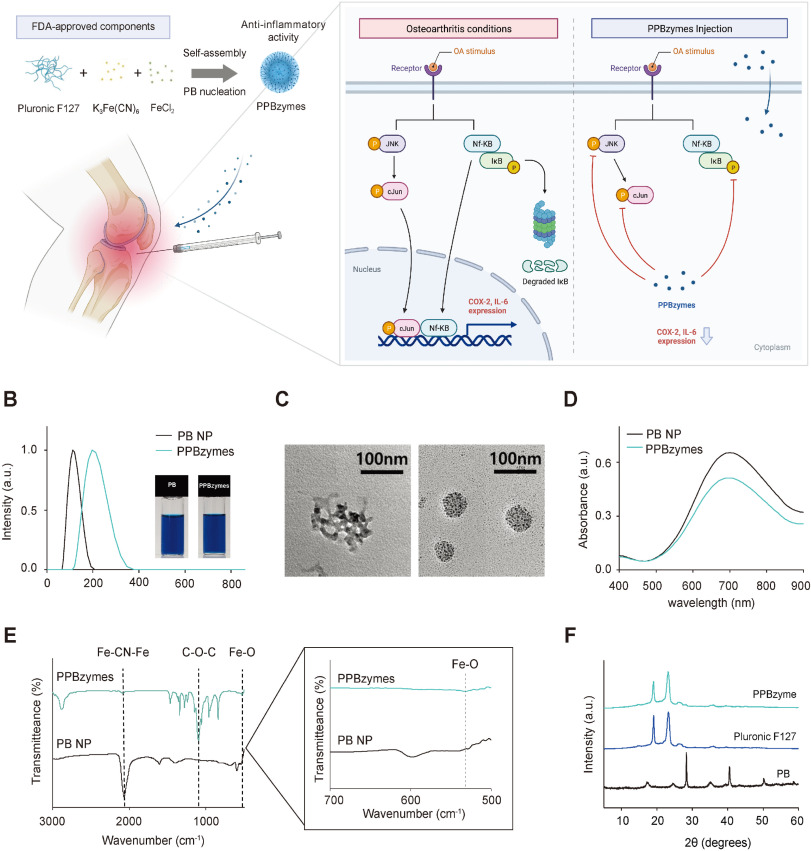
[논문/Biomaterials] Prussian blue nanozymes coated with pluronic attenuate inflammatory osteoarthritis by blocking c-Jun N-terminal kinase phosphorylation
작성자
관리자작성일자
2022-11-16 10:46조회수
73KIURI 강이중 참여연구원 논문
Biomaterials. 2022 Oct 25; doi: 10.1016/j.biomaterials.2022.121851
Prussian blue nanozymes coated with pluronic attenuate inflammatory osteoarthritis by blocking c-Jun N-terminal kinase phosphorylation
Osteoarthritis (OA) is a degenerative joint disorder associated with inflammation, functional disability, and high socioeconomic costs. The development of effective therapies against inflammatory OA has been limited owing to its complex and multifactorial nature. The efficacy of Prussian blue nanozymes coated with Pluronic (PPBzymes), US Food and Drug Administration-approved components, and their mechanisms of action have been described in this study, and PPBzymes have been characterized as a new OA therapeutic. Spherical PPBzymes were developed via nucleation and stabilization of Prussian blue inside Pluronic micelles. A uniformly distributed diameter of approximately 204 nm was obtained, which was maintained after storage in an aqueous solution and biological buffer. This indicates that PPBzymes are stable and could have biomedical applications. In vitro data revealed that PPBzymes promote cartilage generation and reduce cartilage degradation. Moreover, intra-articular injections with PPBzymes into mouse joints revealed their long-term stability and effective uptake into the cartilage matrix. Furthermore, intra-articular PPBzymes injections attenuated cartilage degradation without exhibiting cytotoxicity toward the synovial membrane, lungs, and liver. Notably, based on proteome microarray data, PPBzymes specifically block the JNK phosphorylation, which modulates inflammatory OA pathogenesis. These findings indicate that PPBzymes might represent a biocompatible and effective nanotherapeutic for obstructing JNK phosphorylation.
